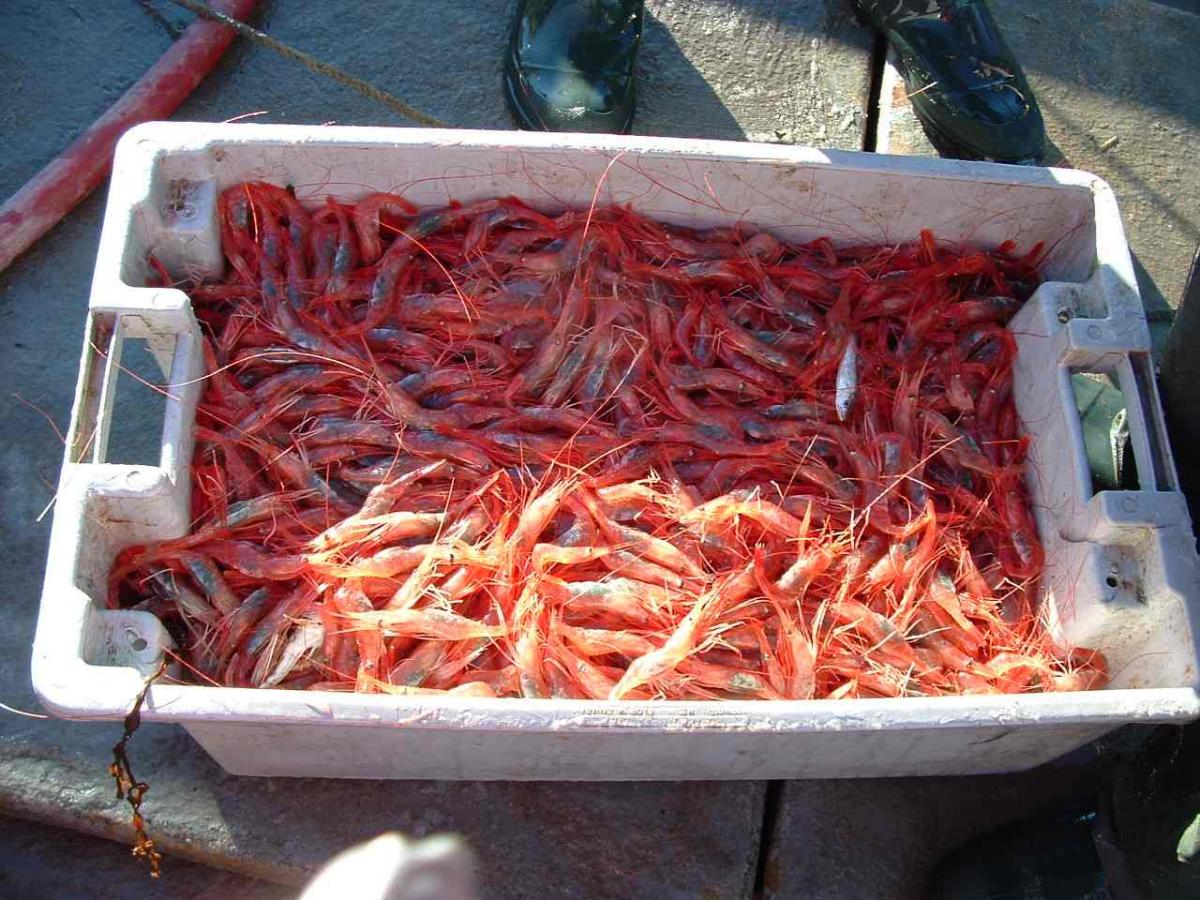Shrimp
Species Description
Northern shrimp Pandalus borealis
also known as Maine shrimp, coldwater shrimp, pink shrimp
Wild.
Northern or Maine shrimp are small, pink shrimp found throughout the Arctic, North Atlantic, and North Pacific oceans – they are much smaller than warm-water shrimp, averaging 2 to 4 inches in length.
When alive, the tails and bodies of northern shrimp are more red than pink, and the shells are translucent. They have appendages called pleopods on their tail that act like paddles and enable them to move quickly and far.
Season
Traditionally between December and April. A moratorium on all shrimp fishing has been in place since 2014, with a very short experimental fishery occurring in 2025.
Status
Northern shrimp abundance in the western Gulf of Maine has declined steadily since 2006, and the Atlantic States Marine Fisheries Commission lists the species in the Gulf of Maine as ‘depleted.’
Regulatory Authority
Atlantic States Marine Fisheries Commission.
Harvest Method
In the past, shrimp were harvested from muddy-bottom habitat off the coast of Maine with trawls and pots. See the vessel and gear guide for more information.
Recreational Harvest
No recreational fishing allowed.
Health Benefits & Risks
Shrimp are a low-fat, low-calorie source of selenium, but are low in omega-3 fatty acids. Maine shrimp are low in mercury.
View the 2021 US Food and Drug Administration’s fish consumption guidelines.
Buying & Preparing
Look for shrimp from a certified shellfish dealer to ensure quality and safety. While Maine’s northern shrimp fishery is currently closed, frozen shrimp from Canadian fisheries remain available and are a good alternative.
Fresh northern shrimp may appear muddy or have greenish-blue eggs attached; these are normal signs of freshness. A quick rinse and shelling will take care of it. Their thin, easy-to-peel shells and lack of a vein make prep simple.
These shrimp cook very quickly, taking just one-to-two minutes until they turn opaque and curl. They can be used in place of other shrimp in recipes, but you may need to adjust cooking times and account for extra moisture, as they release a lot of liquid when heated.
Note: If the shrimp have a strong ammonia-like odor, they’ve spoiled and should be discarded.
Recipes
Certifications & Verifications
Links
- Maine Department of Marine Resources Shrimp Page
- NOAA Fisheries Species Directory
- An Update on Northern Shrimp from the Maine Coast Fishermen’s Association

